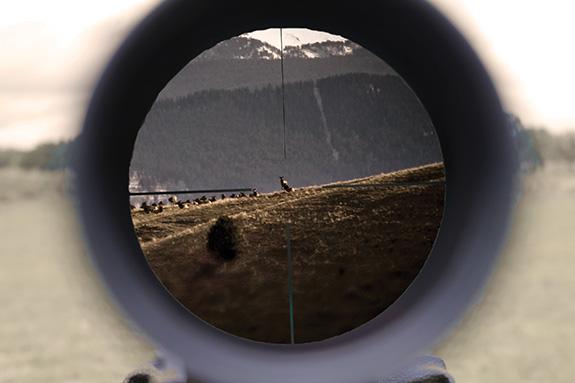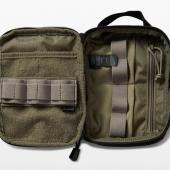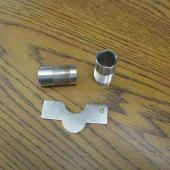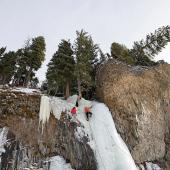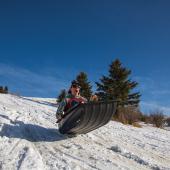Scope Creep
Musings on long-range hunting.
Over the last decade, the quality and availability of long-range shooting equipment has increased dramatically. Rifles that shoot remarkably tight groups at extended distances, reticle-adjusting turrets matched ballistically to the ammunition, rangefinders with ballistic solutions… the list goes on. These days, anyone with a smartphone can shoot out to 1,000 yards or more, and do it for relatively cheap. With all this great equipment, we are hearing more and more about hunters harvesting game at great distances, and it has me wondering: at what distance does taking a shot at an animal become unethical?
There’s no easy answer, of course, but in my mind it comes down to percentages: the odds of an accurate shot and a clean kill. And there’s way more to the equation than just marksmanship. So what each hunter must ask is this: what percentage am I okay with? Ninety-percent chance of a kill-shot? Eighty? Fifty? And how do I accurately determine that percentage?
The specific number is an ethical rabbit-hole we won’t go down right now, but whatever your chosen percentage, there are several factors to consider when making the calculation.
First off, what are the capabilities of your rifle and bullet of choice? The suggested minimum energy at impact for elk is 1,300 foot-pounds. Most ammunition manufacturers now offer a bullet-drop calculator, which should give you a good estimate and in turn give you a maximum range for your round of choice. Two items that affect energy are ballistic coefficient (BC) and velocity. In easy-to-understand terms, BC is how well the bullet travels through the air—the higher the BC, the more efficient the bullet is in flight. Velocity is key to calculating your trajectory: the faster the bullet, the faster it gets to the target and the less it drops. For example: A 210-grain Nosler Long-Range AccuBond (LRAB) bullet from a .300 Winchester Magnum leaving the muzzle at 2,804 feet per second (fps) with a BC of .690 reaches almost 1,200 yards before dropping below 1,300 foot-pounds of energy. Compare that to a 140-grain Hornady Extremely Low-Drag Match (ELD-M) bullet from a 6.5 Creedmoor leaving the muzzle at 2,780 fps with a BC of .610, which runs out of effective energy at 650 yards.
Obviously, there’s a big difference between these two caliber-ammo combinations in terms of how far you can take a shot that will actually kill an elk.
Next: how good are you at judging wind, and how does it affect your round at different distances? These mountains we call home can be the most challenging terrain in which to estimate wind. With the equipment out there, it’s easy to capture wind at our shooting position—but the wind 1,000 yards away could be very different, and evaluating it across a canyon on a cold winter day with no foliage can be a hundred times more challenging. At the end of the day, it is a guess at best. And that doesn’t even include that pesky wind we can’t see mid-range when the bullet hits its highest point of travel. For that same .300 Win. Mag. round, a 5mph wind at 1,000 yards pushes the bullet 2.5 feet!
For those with a turret matched to the rifle and bullet: how do temperature, elevation, barometric pressure, humidity, and density altitude affect the accuracy of your turret? Most turrets are made for a specific elevation and temperature, not taking into account what happens when a storm moves in and changes the pressure, causing a shift in density altitude—sometimes as much as 2,500 feet, which in turn changes how much the bullet drops at that distance.
Finally, what is the animal’s behavior? It’s one thing to shoot a piece of steel, but in the amount of time it takes for the bullet to get to the animal, what is it going to do? It might take as long as 1.5 seconds for the bullet to travel 1,000 yards—is that enough time for the animal to take half a step?
Given all these variables, the most important question to ask yourself is this: how confident are you at making a first-round impact, whether the distance is 200 or 1,200 yards? Again, what’s your percentage? The only way to truly figure that out is to consider all the above information, and then: practice, practice, practice. The sport of practical long-range shooting has exploded in recent years, and it’s pretty easy to find places to shoot. You can even hit up a few local matches each summer, which is a great way to hone your skills in a realistic environment—awkward and uncomfortable shooting positions, unfamiliar terrain, adrenaline, etc.—and really get a grasp on what it takes to understand long-range shooting.
Which brings us back to ethics. You can buy the most cutting-edge equipment out there, but you need to ask yourself as a hunter and conservationist, what is my percentage at this distance? Is it worth the risk to take the long shot and possibly harvest but maybe wound the animal? If the animal is wounded, will it wander off to die, and will you have wasted both a life and a winter’s worth of meat? After answering these questions, you might just decide to sneak that extra 300 yards and ratchet up the percentage, in order to make a clean, ethical harvest. Which is what each and every game animal deserves.
Bill Wood spent eight years on the USA Shooting Team. He owns RW Outdoors in Sheridan.

